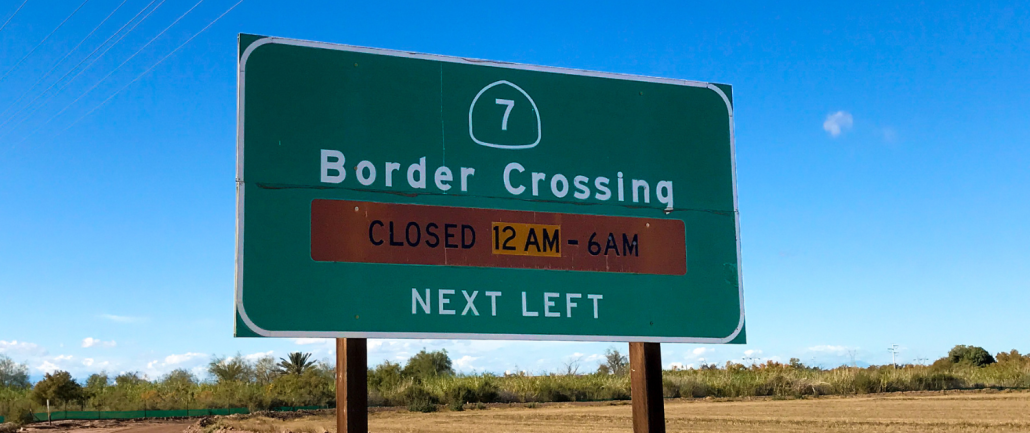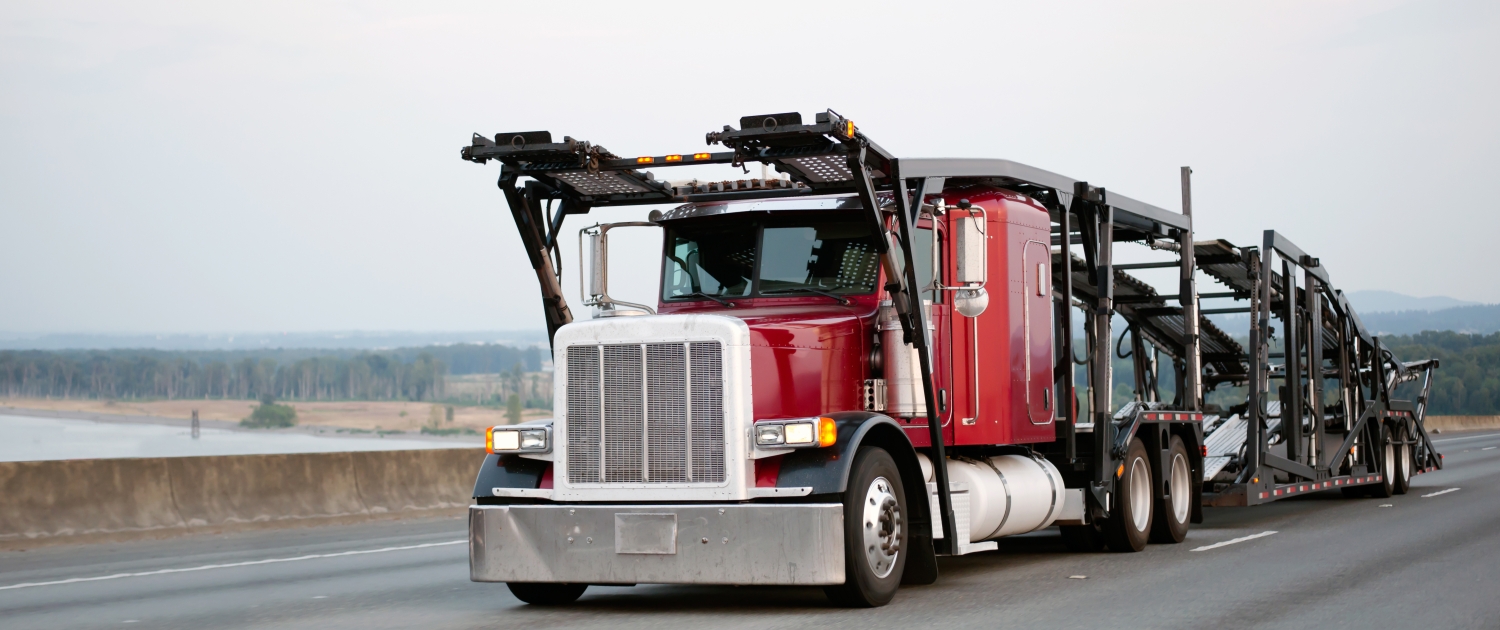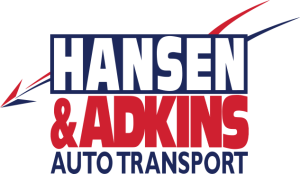
The critical role that American truckers play in our economy and daily life extends far beyond the borders of the United States.
Each day, thousands of CDL drivers cross into Mexico and Canada, delivering essential goods, supporting international trade, and connecting businesses across borders.
Whether you are a seasoned driver or new to international routes, keep reading to discover the challenges of cross-border trucking, the benefits of taking on these routes, and what you need to know to succeed.
What Does a Cross-Border Trucker Do?
Simply put, cross-border trucking involves moving goods by truck across state or international borders.
While crossing state lines is a routine part of any OTR driver’s day, crossing international borders requires dealing with different regulations, customs, and logistical challenges to keep the process smooth and efficient.
The unique challenges and essential nature of this job make it a potentially high-paying opportunity for CDL drivers looking to gain experience and advance their careers. Additionally, the rapidly growing need for cross-border goods transportation ensures that this job will remain in high demand.
Key Requirements to be a Cross-Border Trucker
Like any specialized trucking job, cross-border truckers must comply with certain regulations and requirements. However, because this job involves entering other countries, truckers must also be aware of any additional requirements enforced by the governments of Mexico and Canada.
For American cross-border truckers, the US government requires the following documentation:
- Passport or Enhanced Driver’s License (EDL)
- FAST (Free and Secure Trade) Card for faster border crossing
- C-TPAT (Customs-Trade Partnership Against Terrorism) Certification
- Proper Bill of Lading and customs paperwork
- Cross-border insurance coverage
Challenges of Cross-Border Trucking
It is essential to understand the potential difficulties and challenges of cross-border trucking before pursuing this career.
One of the most common challenges with international truck driving is dealing with delays at the border. Hundreds of thousands of people cross US borders daily, leading to congestion and long wait times. These delays can be further complicated by extensive customs inspections, documentation issues, and varying regulations between countries.
Cross-border truckers must also learn and understand the differences in weight limits, hours of service regulations, and vehicle and environmental standards between the US, Mexico, and Canada. Additionally, for drivers entering Mexico, basic Spanish language skills can be essential.
Weather can also be a challenge when entering parts of Canada, especially in winter months. Be aware of the differing road rules in each country and stay up to date on winter driving safety tips.
Tips for Success
The key to success in cross-border trucking, like any CDL job, is being prepared and managing time well.
To minimize delays at the border, drivers should stay updated on changing regulations and requirements for each country, and ensure all paperwork is in order before reaching the border. Plan routes carefully and allow yourself extra time to account for potential border delays and different time zones.
The U.S. Customs and Border Protection’s Border Wait Time app can be extremely useful in providing real time information on border wait times and conditions. Updated GPS systems can also help plan routes that consider the busiest ports of entry and potential delays.
Looking for more information on unique trucking jobs, industry trends, and career advice? Be sure to check out the rest of our Truck Driver blog posts and connect with us on social media today.





 Yes, there are two different tanker endorsements. The “N” endorsement allows drivers to haul a tank trailer. The “X” endorsement also allows a driver to haul a tank trailer with HAZMAT material inside. This means that the “X” endorsement is really just a combination of the “N” and “H” (HAZMAT) endorsements.
Yes, there are two different tanker endorsements. The “N” endorsement allows drivers to haul a tank trailer. The “X” endorsement also allows a driver to haul a tank trailer with HAZMAT material inside. This means that the “X” endorsement is really just a combination of the “N” and “H” (HAZMAT) endorsements. As of right now, all that’s needed to secure an “N” endorsement is to take an additional written knowledge test. This can be done at a testing location in your state. Visit your state’s DMV/BMV for more information on where to test and what information
As of right now, all that’s needed to secure an “N” endorsement is to take an additional written knowledge test. This can be done at a testing location in your state. Visit your state’s DMV/BMV for more information on where to test and what information  More Opportunities
More Opportunities



 Bonuses are a great way to make more money in trucking. Most carriers likely have their own bonus structure, and you should have a copy of the payout information available to you when you start working for them.
Bonuses are a great way to make more money in trucking. Most carriers likely have their own bonus structure, and you should have a copy of the payout information available to you when you start working for them.  Another tip is to keep up with the new systems and processes in the industry. Technology is always changing so make sure you’re doing your part to keep up with the necessary tools and systems that can benefit you in the future. Something that’s optional now might become mandatory to use in the future. Learn it now, and you’ll have an advantage later when you’re applying to higher-paying jobs.
Another tip is to keep up with the new systems and processes in the industry. Technology is always changing so make sure you’re doing your part to keep up with the necessary tools and systems that can benefit you in the future. Something that’s optional now might become mandatory to use in the future. Learn it now, and you’ll have an advantage later when you’re applying to higher-paying jobs. 


 We were about to talk with Robert Sitarski, Customer Service and Dealer Relations Supervisor with Drive My Way client, Hansen & Adkins. Robert has years of experience as a car hauler and shared his thoughts and advice for drivers considering this field.
We were about to talk with Robert Sitarski, Customer Service and Dealer Relations Supervisor with Drive My Way client, Hansen & Adkins. Robert has years of experience as a car hauler and shared his thoughts and advice for drivers considering this field.  Intermodal trucking can be a great option for truck drivers who are looking for a new job over the road and want to try something different than typical dry and reefer hauling. Here are 3 perks of being an intermodal trucker, along with quotes from actual intermodal drivers about what the job is like.
Intermodal trucking can be a great option for truck drivers who are looking for a new job over the road and want to try something different than typical dry and reefer hauling. Here are 3 perks of being an intermodal trucker, along with quotes from actual intermodal drivers about what the job is like. If consistent home time and a healthy work/life balance are important to you, intermodal trucking might be a good choice for your next driving job. Drivers will tell you that the biggest benefit of this line of work is the consistent schedule and shorter routes. Drivers will usually complete at least one route, (most times more) in a single shift and be home every night.
If consistent home time and a healthy work/life balance are important to you, intermodal trucking might be a good choice for your next driving job. Drivers will tell you that the biggest benefit of this line of work is the consistent schedule and shorter routes. Drivers will usually complete at least one route, (most times more) in a single shift and be home every night. The shipping containers that intermodal truckers haul move from transport vehicle to transport vehicle without being unpacked or broken down (With the exception of inspections by customs officials). They stay packed as is and sealed from the time they leave, until they get to their destination.
The shipping containers that intermodal truckers haul move from transport vehicle to transport vehicle without being unpacked or broken down (With the exception of inspections by customs officials). They stay packed as is and sealed from the time they leave, until they get to their destination. Most intermodal drivers find the real perk of the job to be the flexibility that it provides them. We talked to another intermodal truck driver, Ritsuko, and she shared what she loves about intermodal trucking, including seeing the country and making money.
Most intermodal drivers find the real perk of the job to be the flexibility that it provides them. We talked to another intermodal truck driver, Ritsuko, and she shared what she loves about intermodal trucking, including seeing the country and making money.
 Though getting a Class A CDL will open the
Though getting a Class A CDL will open the  With a Class B CDL, a trucker can drive any vehicles endorsed for Class B or Class C. Some of these vehicles are:
With a Class B CDL, a trucker can drive any vehicles endorsed for Class B or Class C. Some of these vehicles are: To hold a Class B CDL, you only need to be 18 years old. This is actually true for a CDL A as well, but many companies will not hire
To hold a Class B CDL, you only need to be 18 years old. This is actually true for a CDL A as well, but many companies will not hire  If you’re a truck driver looking to stay close to home, a Class B CDL might be a great option for you, since most CDL B jobs only run locally. This means that if you’re planning on getting your Class B CDL, you should be prepared for jobs as a mover, delivery driver, bus driver, or
If you’re a truck driver looking to stay close to home, a Class B CDL might be a great option for you, since most CDL B jobs only run locally. This means that if you’re planning on getting your Class B CDL, you should be prepared for jobs as a mover, delivery driver, bus driver, or 
 While this isn’t always possible for OTR and regional drivers, limiting rest area stops at night is the best way to protect yourself on the road. When you do have to stop at a rest stop, avoid stopping at the nearest truck stop. Instead, do some research on the best ones on your route.
While this isn’t always possible for OTR and regional drivers, limiting rest area stops at night is the best way to protect yourself on the road. When you do have to stop at a rest stop, avoid stopping at the nearest truck stop. Instead, do some research on the best ones on your route. The same rules that apply to parking garage and parking lot safety also apply to truck stops. If you need to get out of your cab at night, there’s a few different things you can do to be as safe as possible.
The same rules that apply to parking garage and parking lot safety also apply to truck stops. If you need to get out of your cab at night, there’s a few different things you can do to be as safe as possible.  When people talk about protecting themselves, one thing usually comes to mind; firearms. While many drivers do prefer to carry while in their vehicle, there are some things you should be aware of if you plan on doing the same.
When people talk about protecting themselves, one thing usually comes to mind; firearms. While many drivers do prefer to carry while in their vehicle, there are some things you should be aware of if you plan on doing the same. 
